Four students, two creeks, one mission
Topics
Featured
Share online
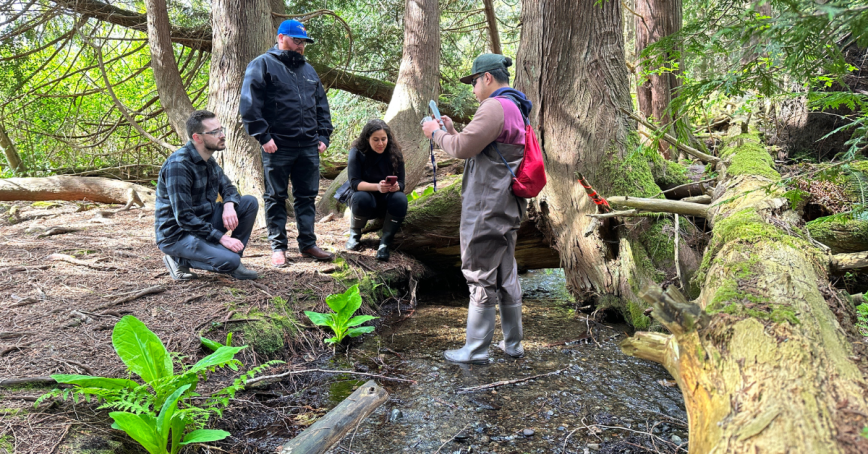
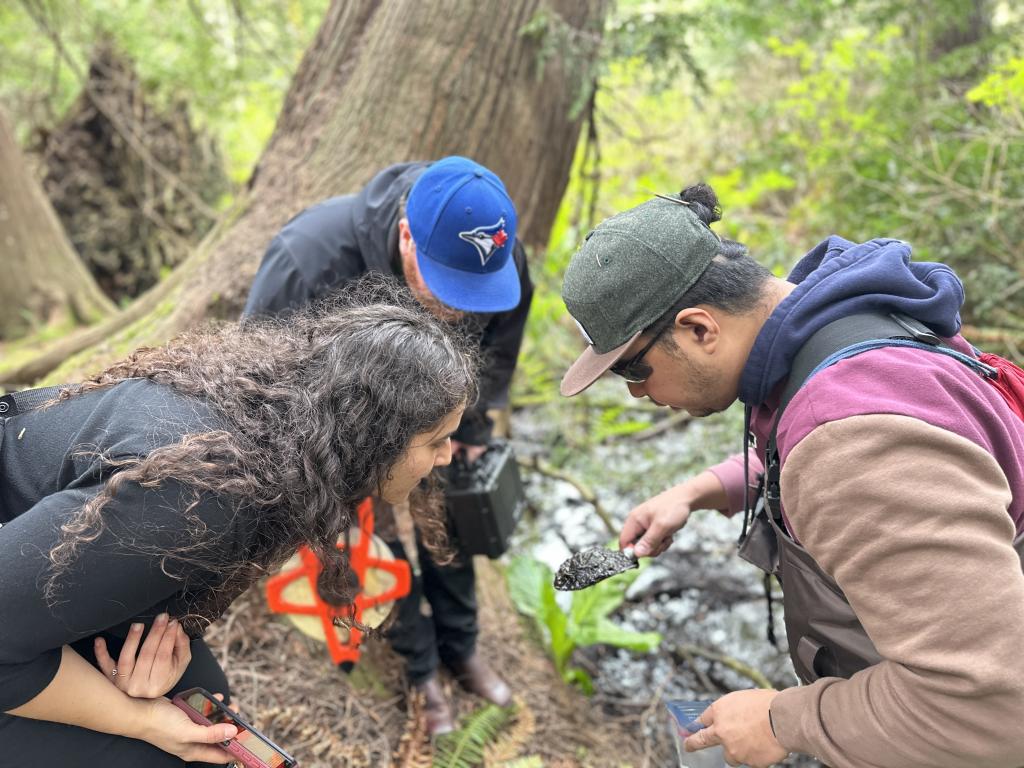
The team collects sediment samples both upstream and downstream to gather a picture of the entire creek. In part, they’ll be measuring the presence of heavy metals.
“Monitoring Colwood and Hatley Creeks, its ecosystems and analyzing the sediments is crucial when things are changing,” Niegas says. “When temperatures change, when flow patterns change, it can affect the overall aquatic habitat of the two creeks.”
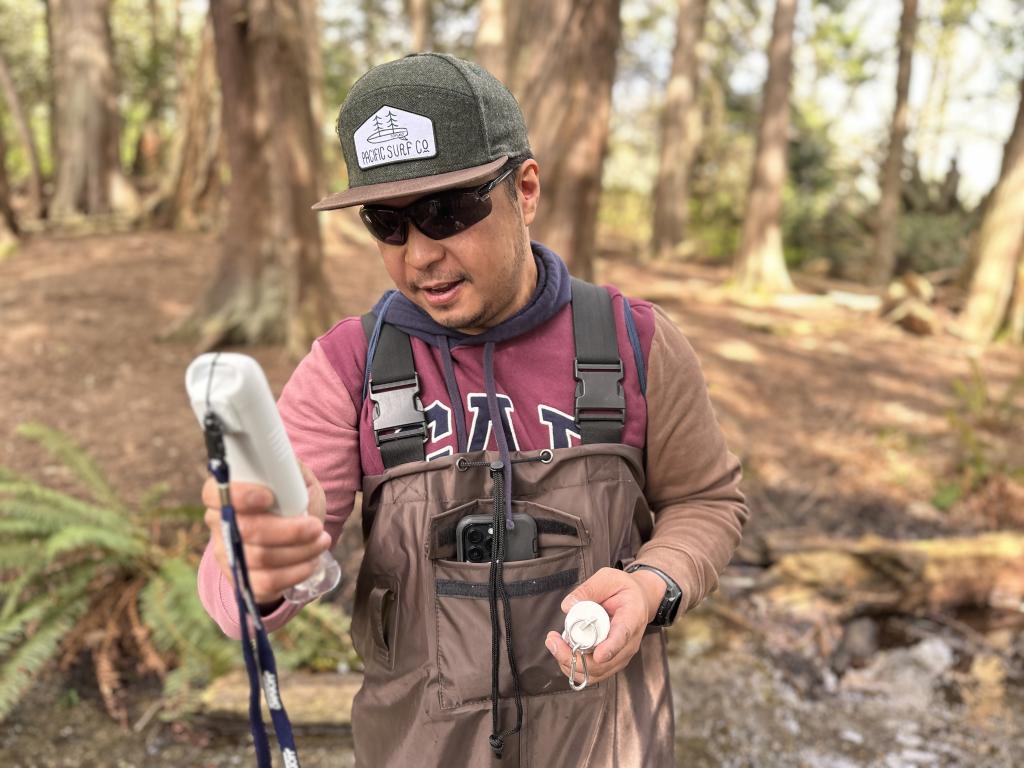
"This water monitoring project helps us assess the health of the two ecosystems, identify potential stressors and apply conservation measures to protect the biodiversity and the water quality of Hatley and Colwood creeks," says Ivan Niegas.
Their eight-month hands-on environmental consulting project, a requirement of their 12-month on-campus program, runs through August 2024. It builds upon previous research efforts dating back to 2019. Their findings will provide valuable historical data to assess environmental health and inform conservation efforts.
To do so, they’ll look at important data including water flow and quality, sediment samples and invertebrate populations. They’ll also monitor wildlife in the surrounding ecosystem using trail cameras and by fish trapping.
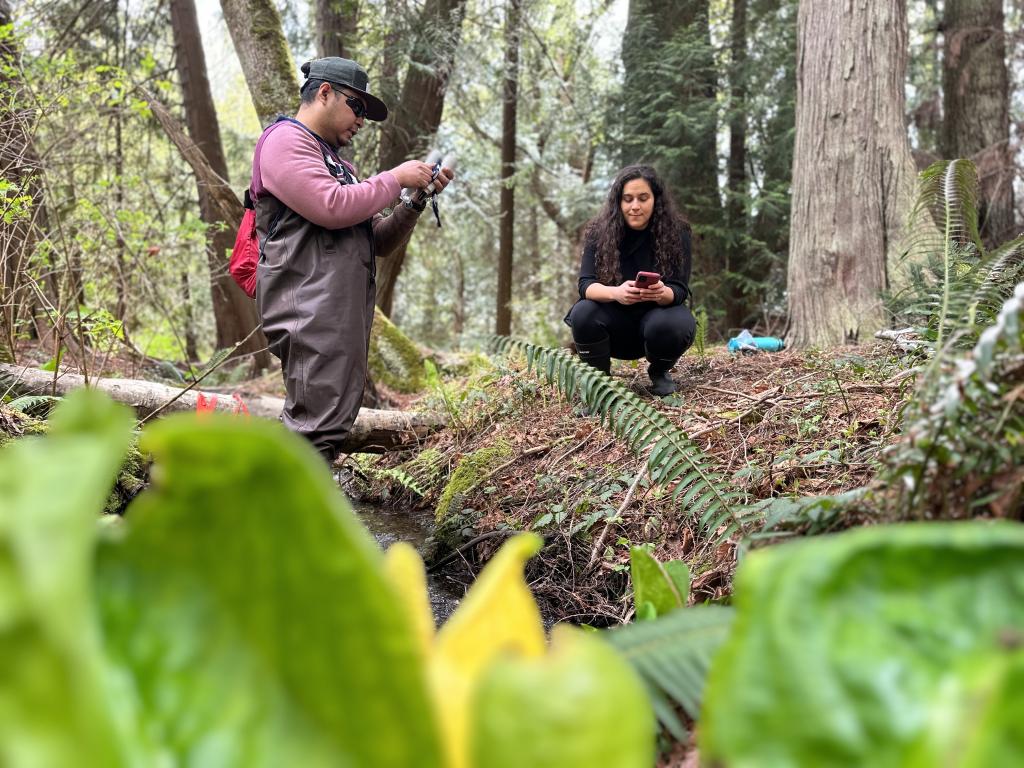
"It’s going to be great to say I have eight months of wildlife monitoring on my resume. That’s huge for the things that I’m looking to get into," says Aicha Hezit.
“Right now, I’m going to switch out the SD card on this trail camera,” Hezit says, carefully navigating the narrow waterway and ducking under branches to reach the camera affixed to a nearby tree alongside Hatley Creek. The creek runs along a walking trail beginning behind the Sherman Jen Building.
“I’m really excited for the wildlife part of this project,” says Hezit, who plans to become a wildlife biologist. “This project is really cool because we’re also looking at fish, which are an important indicator of health. If we do find salmon in there, that’s a great sign.
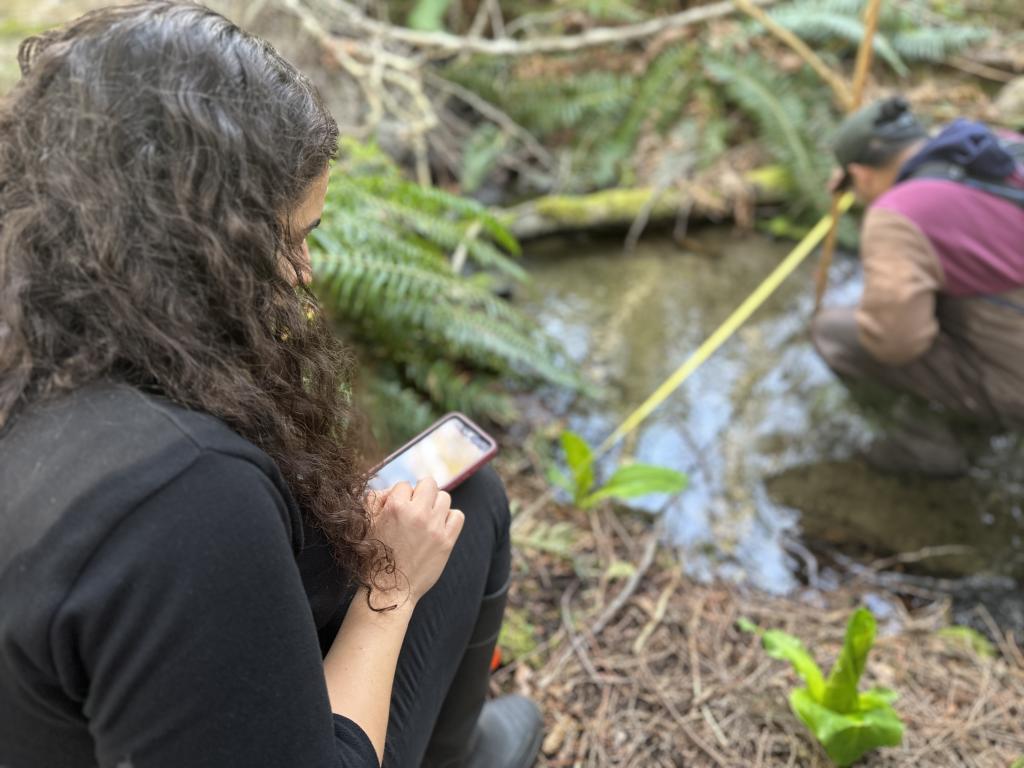
Aicha Hezit records metrics such as water flow speed and the width of the creek. These findings will help the team calculate how much water is actually flowing through to Esquimalt Lagoon says Coleton Dayle.
Their findings, though still unfolding, hint at a thriving ecosystem. They’ve captured images of deer, mallard ducks and a double-breasted cormorant.
“We haven’t visually seen fish, but the fact that we’ve caught [a double-breasted cormorant] coming up the creek from the lagoon is an indicator that there might be something there,” Hezit says.
The distant melody of a bird song accompanies the gentle burble of the creek. As the students move to their next collection point – they visit 19 each week – White notices a bottle cap on the ground and without hesitation, picks it up.
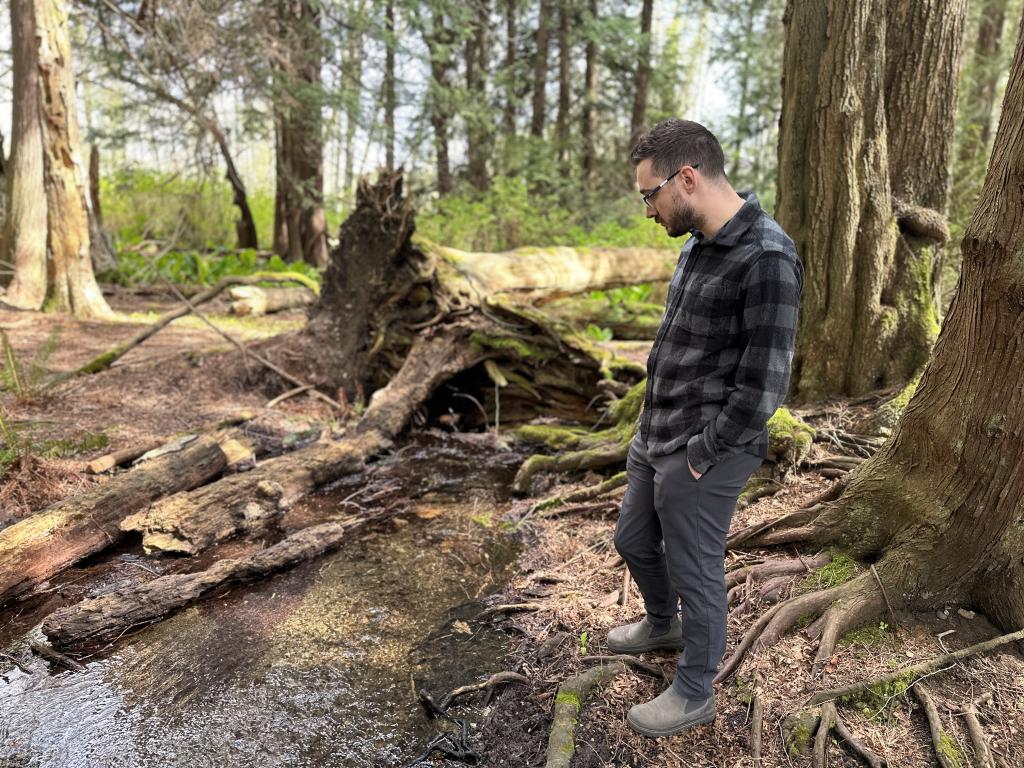
Robert White says it's important to leave the campus trails cleaner than he found them.
“We tend to walk the same paths every week,” he says. “When we do see stuff, it’s just nice to remove it.”
It’s a level of care Niegas shares.
“This monitoring project will give us early warning signs of current environmental disturbances and that will give us a chance to be able to respond in a timely manner to protect the biodiversity, the surrounding communities and the downstream Esquimalt Lagoon,” he says.
“Before, it was just a required project that you needed to do. But then you keep on doing it and you start to really care and you value the work that you do.”
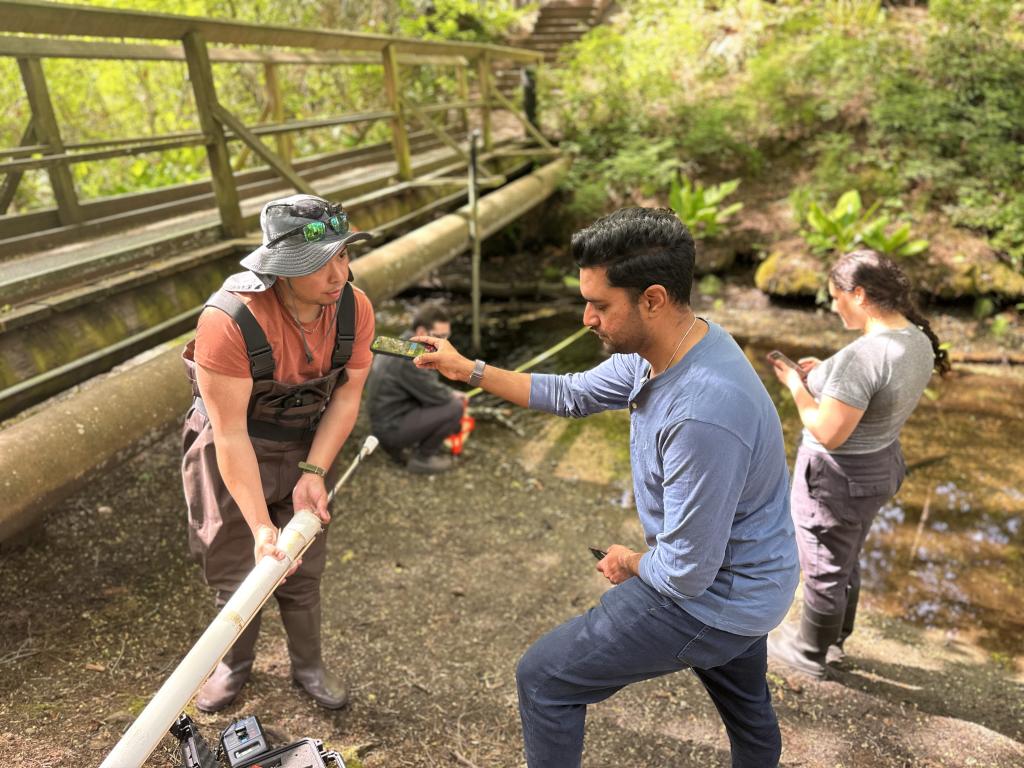
In the news
Jason D'Souza from CBC's All Points West speaks with the students about their project and what they've learned. Listen to the seven-minute radio piece.
Royal Roads students are monitoring Hatley and Colwood creeks to check for potential environmental indicators affecting the health of the two water habitats.https://t.co/xoXaoGUuXp
— CHEK News (@CHEK_News) April 23, 2024
If research like this interests you, check out these environment and sustainability-related programs, or all our other programs.
- Master of Arts in Climate Action Leadership
- Master of Arts in Environment and Management
- Master of Science in Environment and Management
- Master of Arts in Environmental Education and Communication
- Master of Science in Environmental Practice
- Master of Arts in Environmental Practice
- Bachelor of Science in Environmental Practice
- Bachelor of Science in Environmental Science
- Graduate Certificate in Regenerative Sustainable Community Development
- Graduate Certificate in the Science and Policy of Climate Change